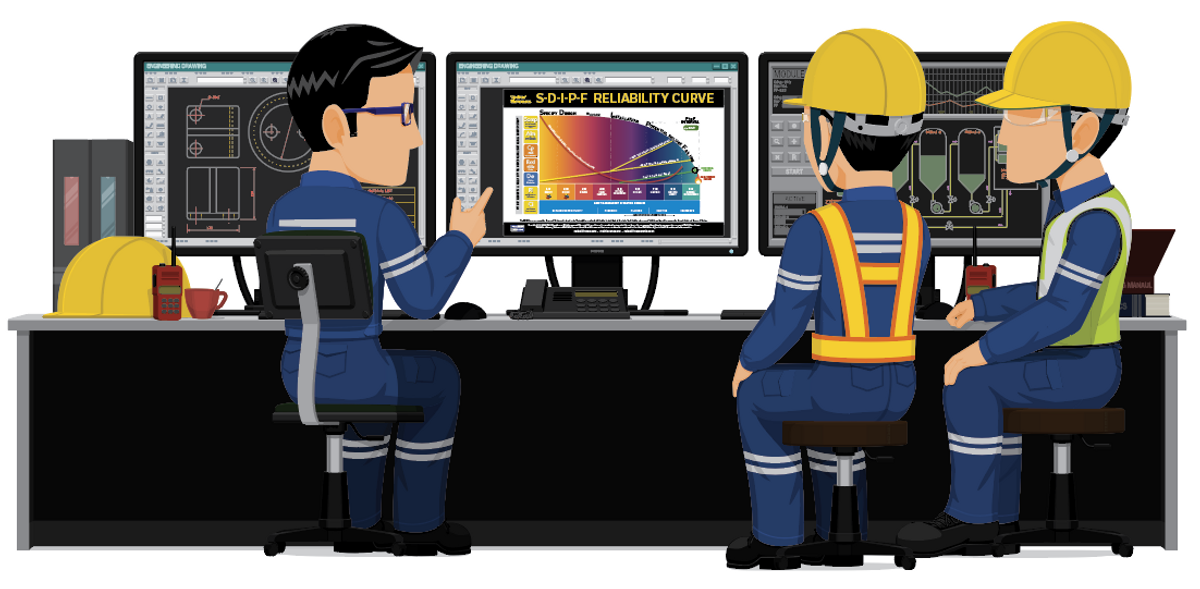The best advice I got as a young reliability engineer was from an early mentor. He said, “Never let them see you sweat, kid.”
To this day, it’s one of the best pieces of advice and something I think about often, but to make it happen is something that might be a little bit tougher for most. Sitting in front of a group of seasoned, well-oiled millwrights and mechanics can be intimidating. Guys and gals that have been in the industry forever have that tribal knowledge that we would all kill for. These people just know there’s something wrong at the slightest tune change of a piece of equipment.
One day, years ago, this young reliability engineer was tasked with creating job plans for a client in the pharmaceutical industry. The process was well defined and based on best practices. Everything was all well and good, or so I thought. Starting at the beginning, we worked through to the end:
- Asset identification;
- FMEA created;
- Defined asset criticality;
- Included our predictive maintenance (PdM) and route activities;
- Developed mitigating activities for each failure mode;
- Defined schedules and loaded them into CMMS;
- Chatted with the techs and got some feedback;
The feedback I received was not the nicest, in fact, there were a few choice words that I may have heard for the first time ever. To this day, I’m not sure if they were more upset that they weren’t consulted with the changes before they were made or if it was the job plan tasks were now in their personal digital assistant devices. Not everyone was so upset, though, some of the guys understood the progressive steps we were taking to align with the current times. Leveraging data and technology to understand fault conditions earlier, they knew they either needed to get on board or face even larger change.
The second great piece of advice I received was about inclusion. I learned early that bringing in the people who get the work at the end of the day is invaluable. During our next PM rollout, we made sure to have technicians involved prior to rollout, starting with the job plan review. A little late in the process, we corrected that quickly. Technicians are quick to call out what makes sense and what doesn’t, what equipment is more important and what isn’t so much; they know where they’re going to lose their lunch.
Sometimes, we run into teams that have cultural differences. The age-old homage, “I’ve done it this way for longer than you’ve been alive,” doesn’t always mean it’s what we want them to do. The silver tsunami era of technicians often leans on traditional, time-based, preventive (OEM type) maintenance to get the job done. Education and communication are keys to solving these differences. Go through the process, talk about preservation of function, talk about failure mode mitigation and prioritization, and talk about how reliability engineers provide comprehensive failure mode coverage from a position of risk to the operations. Create a communications plan, help them understand the P-F curve, and help them to understand why things look differently from what they’ve always done. It will lead to a smoother, more sustainable solution, for sure.





